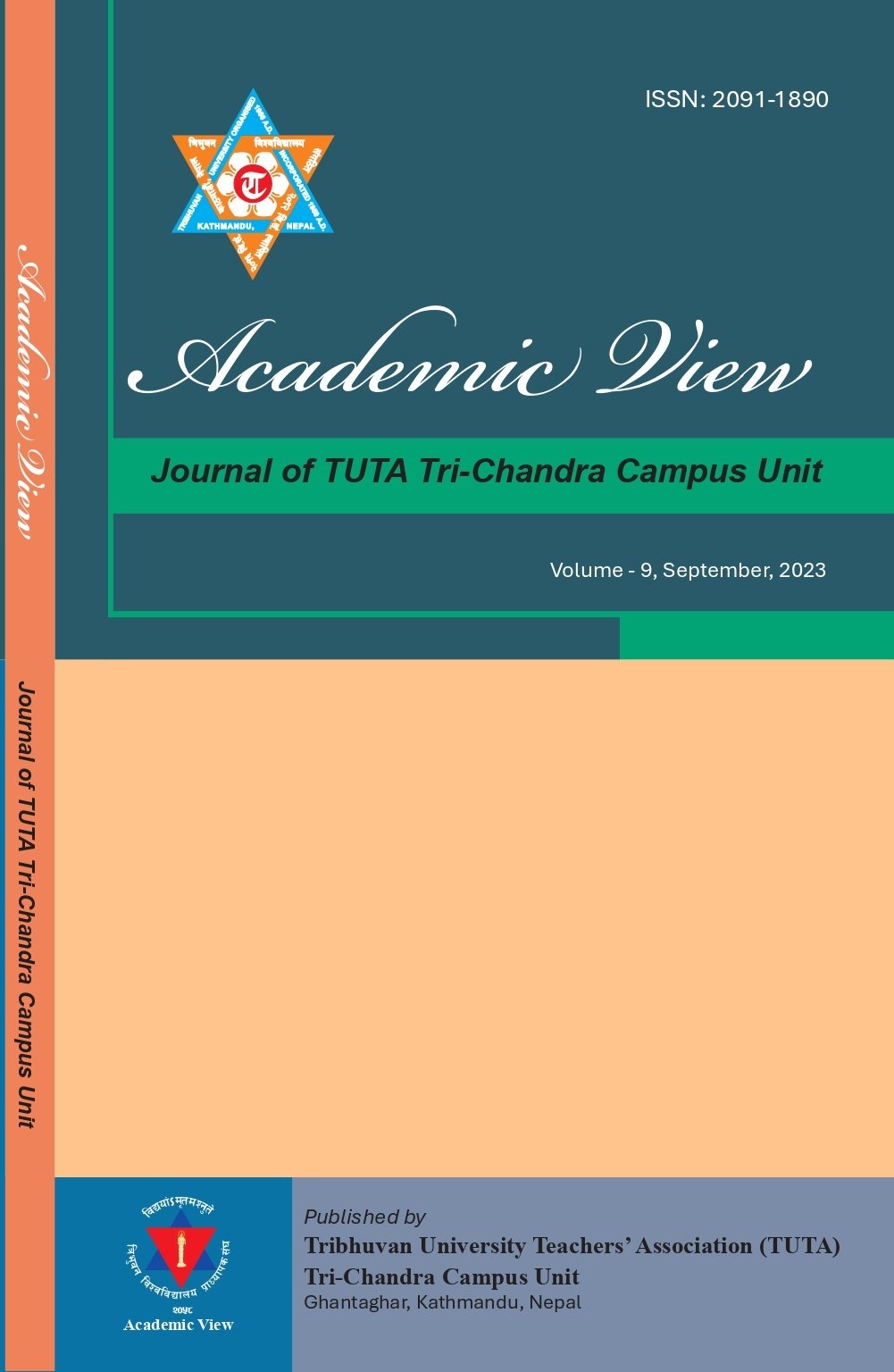Trends, Patterns and Effects of Remittance in Nepal
DOI:
https://doi.org/10.3126/acadview.v9i1.71254Keywords:
Development, Gross Domestic Product (GDP), Remittance, Social, TransferAbstract
Remittance refers the sending or transfer of cash or kinds received or sent or by individual or household from one place to another place within the country or our of country through the legal channel and it is important lifeline in many developing countries. Almost 25 percent GDP of Nepal coveraged by Remittance. The main purpose of this article is to analyzed trends, patterns, using areas, coverage of remittance and its’ social effects in Nepal. An article is prepared on the basis of available data /information related to remittance sent in Nepal. Other data/information has not been collected and analyzed by the Author rather than Remittance Transfer situation of Nepal and its social effects. The sources of information has been clearly mentioned and also given the references. Author has prepared this article maintaining the academic ethics and value. Secondary based quantitative information are analyzed and interpreted with inductive approach. Percent of household receiving the remittance almost three times increased since 1995/96 to 2010/11 and it is gradually increased until fiscal year 2017/18. Terai household received more remittance comparing to mountain and hills. Same way, more remittance are receiving by rural areas comparing to urban areas. The remittance is coverage the almost more than 25 percent GDP of Nepal. Largest amount of remittance utilize for food and cloths. However, there are huge effects of the remittance in Nepalese society (CBS, 2014, KC B.B. 2017 and Nepal Rastra Bank, FY 2018/19).




